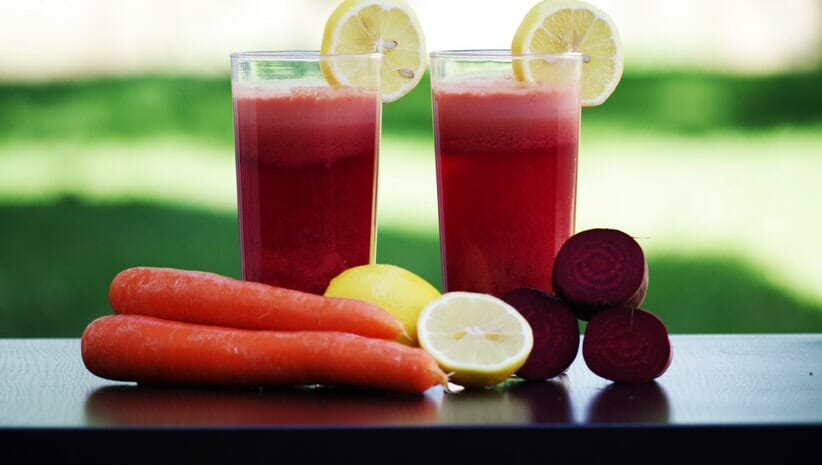
Slowing Down and Revving Up Before and After a Cleansing Program
When considering any type of cleanse, it is important to properly prepare the mind, body and spirit for the experience. Think about driving on the freeway and what it would be like to go from eighty miles per hour to standing still. This is why the preparation before (pre-cleanse) and reemergence (post-cleanse) after the cleanse is just as important as the experience itself to cultivate ongoing health and well-being that continues long after the cleanse or detoxification.
Mirey Yuhay utilized the principles and practices of detoxification to develop a healthy relationship with her body, losing 100 pounds in the process and ridding herself of allergies and back pain. She is now on staff guiding people through detoxification programs at The LifeCoBodrum Detox Merkezi on the beautiful Bodrum Peninsula in Turkey where Yoga, massage and Turkish baths are integrated into the detox process. She provides the following recommendations for people to follow before they arrive.
Pre-Cleanse Practices
- Avoid all caffeinated drinks. No coffee, no black tea, no Coke or other soda pops, no energy drinks (this is very important).
- Please drink at least three liters of water everyday: half before lunch, and the other half before bed.
- Please avoid consuming water with meals; drink your water half an hour before or one hour later than eating other food.
- Please avoid all dairy products, no milk, no, cheese and no yogurt.
- Please avoid eggs.
- Please avoid all animal meat other than grilled fish.
- Please avoid heavy carbohydrates like white rice, pasta and white bread.
- Please avoid white sugar.
- Drink two fresh squeezed fruit or vegetable juices daily.
- All herbal teas can be consumed.
- Eat plenty of raw vegetables and fruits.
Post-Cleanse Practices
As the process of cleansing is coming to a close, it is vital to think about how to transition back to the routine of everyday life. Going through a detoxification program wipes the slate clean, giving us the opportunity to decide what it is we want to draw on the chalkboard and allowing us to establish healthy habits to support us throughout our lives. From an Ayurvedic perspective, a cleanse is a precursor to rasayana, the process of rejuvenation. In many ways, a cleansing program is a new beginning, a chance for us to make new resolutions for health. When we embark on a cleanse in the spring, the natural time of the year for renewal and restoration, this process is heightened.
Ameya Dupreys is a certified panchakarma therapist who makes the following recommendations for people to transition from the vulnerable and sensitive time during the cleanse to the post-cleanse promotion of lasting health.
Transition from a Cleanse
- Pay attention to your digestion and the signals your body sends you. Gas, bloating, discomfort, burping or belching, constipation or loose motions, feeling sleepy or sluggish after meals and feeling like you have a rock or stone in your abdominal area are all signs that you’re not properly digesting whatever you’re eating. Only eat what you can digest.
- Feel for signs of hunger and only eat when hungry. We sometimes eat out of habit, watching the clock or boredom more than eating for actual hunger. While waiting until we’re uncomfortable or cranky is not a desired practice, feeling some hunger is a sign that your agni (digestive fire) has kicked in.
- The first week after ending a cleanse, choose easy to digest vegetables as the first new foods you introduce such as squash, asparagus, cilantro, root vegetables (including yams and sweet potatotes).
- Favor mild spices during the first two weeks after a cleanse. These include: cumin, coriander and fennel (together, these make a delicious tea), turmeric and ginger (depending on how your body tolerates its pungency.)
- Wait at least two weeks before including the following foods in your diet:
- Common allergens (wheat, soy, corn, dairy, peanuts and walnuts).
- Nightshades (tomatoes, white potatoes, eggplants and peppers).
- Brassicas (broccoli, cauliflower, cabbage and Brussels sprouts).
- Dairy products including yogurt. Excessively pungent spices, such as onions, garlic, chilis, black pepper, cloves and black mustard seeds.
- Processed foods, caffeine and sugar.
Post-Cleanse Advice
Duprey’s three most important pieces of advice post-cleanse:
- Meet with your practitioner to develop an individualized rejuvenation program.
- Cultivate a long-term awareness of what a healthy dietary program means for you.
- Engage in activities that support ojas (vitality) and prana (life force), including spiritual practice, time in nature, moonlight
walks, standing in freshly dewed grass and moon bathing.
After a proper cleanse and rejuvenation program, you may find that you no longer crave some of the processed foods, meat, caffeine, refined sugar, alcohol or other substances that may have been something you relied on in your daily routine.
Felicia Tomasko has spent more of her life practicing Yoga and Ayurveda than not. She first became introduced to the teachings through the writings of the Transcendentalists, through meditation, and using asana to cross-train for her practice of cross-country running. Between beginning her commitment to Yoga and Ayurveda and today, she earned degrees in environmental biology and anthropology and nursing, and certifications in the practice and teaching of yoga, yoga therapy, and Ayurveda while working in fields including cognitive neuroscience and plant biochemistry. Her commitment to writing is at least as long as her commitment to yoga. Working on everything related to the written word from newspapers to magazines to websites to books, Felicia has been writing and editing professionally since college. In order to feel like a teenager again, Felicia has pulled out her running shoes for regular interval sessions throughout Southern California. Since the very first issue of LA YOGA, Felicia has been part of the team and the growth and development of the Bliss Network.
